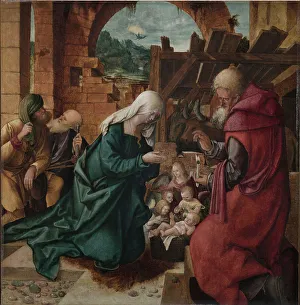Virgin Mry Collection
"Virgin Mary: A Timeless Icon of Sorrow, Love, and Devotion" The Virgin Mary has been depicted in various forms throughout history
All Professionally Made to Order for Quick Shipping
"Virgin Mary: A Timeless Icon of Sorrow, Love, and Devotion" The Virgin Mary has been depicted in various forms throughout history, each capturing her essence as the epitome of sorrowful beauty. One such portrayal is Madonna (Sorrowful Virgin), a bronze sculpture created by an unknown artist in 1583-1584. The delicate features and downcast eyes evoke a sense of deep sadness. In contrast, La Serrana or Madonna and Child with the infant St. John showcases the tender bond between mother and child. Painted on canvas, this oil masterpiece radiates warmth and love through its vibrant colors. Moving back in time to 1475, we encounter the Polyptych of Conversano's detail of the Nativity. Executed using tempera on panel, it presents a serene scene where Mary cradles baby Jesus with utmost care. Another captivating representation is found in Virgin and Child from around 1500. Painted on wood using oil pigments, it exudes a sense of divine serenity that transcends time. Shifting our focus to textiles, we discover a tapestry cushion cover depicting the Flight into Egypt made possibly in Sheldon, England during the early 17th century. Crafted from wool threads meticulously woven together, it portrays Mary's journey with Joseph and Jesus as they seek refuge. Returning to traditional art mediums like tempera and gold on wood brings us to another exquisite piece - Virgin and Child from the 1400s. Its intricate details highlight Mary's regal presence while emphasizing her role as both mother and spiritual figure. A different technique emerges through The Virgin painted around 1500 using oil on panel. This artwork captures Mary's gentle gaze as she holds baby Jesus close to her heart. An engraving titled The Virgin with the Swaddled Child transports us further into history; created in 1520 by an anonymous artist who skillfully etched the image onto a plate.
















































